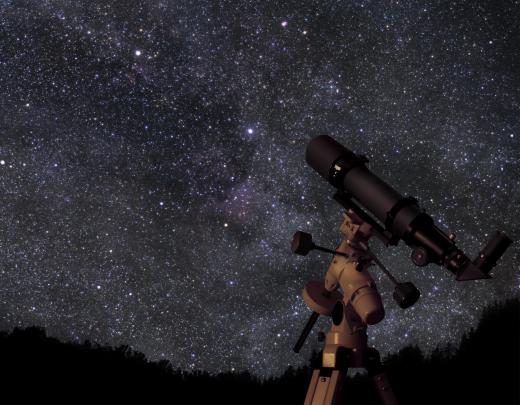What is a White Dwarf?
 Michael Anissimov
Michael Anissimov
A white dwarf is a relatively small, dense type of star that is formed when a main sequence star burns all of its hydrogen and helium fuel but lacks the pressure and heat necessary to fuse carbon and oxygen. A white dwarf has a mass typically between 0.5 and 0.7 times that of the Sun, but a volume comparable to that of the Earth. White dwarfhood is the end state of stellar evolution for 97% of known stars.
The transformation of a star into a white dwarf begins when a main sequence star, around the mass of our Sun, burns up all its hydrogen fuel and starts being forced to fuse helium into carbon and oxygen. Because its core starts to build up with carbon and oxygen that cannot be fused, the fusion must take place on a shell outside the core. The immense gravity of the core pushes the hydrogen together and causes it to fuse much faster than before, increasing the luminosity of the star by a factor of 1,000 - 10,000 and increasing its radius to something comparable to Mars' orbit.

When all the hydrogen in the star is fused, gravity takes over and the star begins to fall in on itself. If the star is sufficiently massive, a supernova may occur. Otherwise, the excess material just floats away to form a planetary nebula, and only the super-dense core remains, which is the white dwarf. Because a white dwarf have no source of energy of its own, the only heat it produces is a remnant from its helium-fusing days. After billions of years, it is predicted that white dwarfs cool to become black dwarfs, lifeless stellar husks, although the age of the universe (13.7 billion years) has not been sufficient for this to occur yet.
White dwarfs make up 6% of all stars in our solar neighborhood. Because no nuclear reactions occur in their core, they aren't very bright, although they are observable with powerful telescopes. Sirius B, the companion of its more famous partner, Sirius A, also known as the Dog Star, is a white dwarf. The first white dwarf was observed by Friedrich Herschel on 31 January 1783, in a binary system, Eridani B and C.
AS FEATURED ON:
AS FEATURED ON:











Discussion Comments
@goldensky - White dwarfs are not big enough to explode into a supernova. Normally they will expand similar to our sun and then shrink into a white dwarf and then go black.
They are dead stars and there isn't sufficient enough mass for a white dwarf to go supernova, however the giant stars do possess enough mass to create an explosion.
The only way it could harm the Earth is if it's pole's were directed right at us. The event of this happening is very unlikely though.
A supernova that occurs less than one hundred light years away would definitely destroy the Earths ozone layer exposing everything to cosmic radiation. Every species would be affected by extinction and horrific environmental changes.
Is it possible for a white dwarf star to turn supernova? If it were say only about eight light years away, how long would we have to protect ourselves from it's radiation?
This web site really helped me out. It had every thing i needed to finish my project. Thanks a lot to everyone that helped make it, and your doing a great job! Hope to come back soon.
wisegeek, your web site is the best thanks for the info.
Post your comments